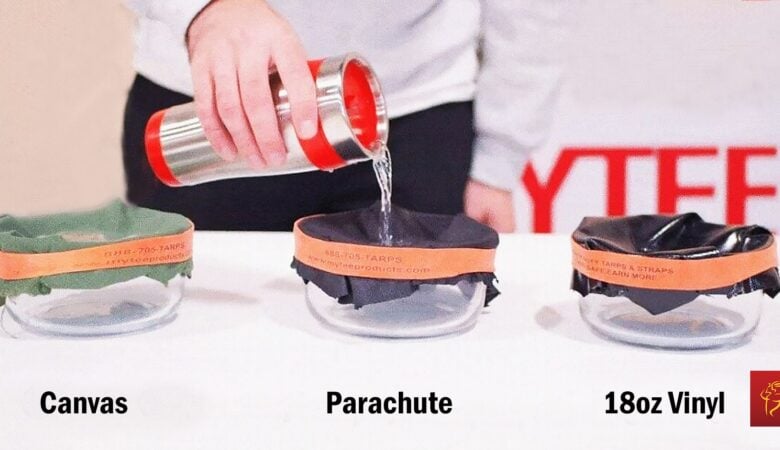A flatbed truck driver’s tarps are among the most important tools of the trade. Without a proper selection of tarps of different sizes and materials, protecting valuable cargo would be considerably more difficult. In light of how important tarps are to flatbed trucking, it is equally important for drivers to use extra care during the winter months. Winter tarping is a lot more challenging than using tarps in the summer.
The key to surviving the winter season with all of your tarps intact is to remember that rapid temperature changes make tarping materials brittle. Snow, ice, and road salt do not help either. Drivers need to be extra careful in order to protect their investments; they need to make sure their tarps last through the winter and into the following spring.

Essential Winter Tarping Tips for Truck Drivers
Here are some winter tarping tips you might be able to use yourself:
1. Warm Tarps in Your Cab
If you know that you will need certain tarps from your inventory on the way to pick up a load, bring them inside the cab and let them warm up as you drive. Warm tarps are certainly easier to apply than cold ones. You will also find them less prone to tearing as well.
Once you reach your destination, you might be used to immediately unloading, folding your tarps, and storing them away in preparation for your next trip. But if you have 15 to 30 minutes of paperwork to do before departure, see if there is an open warehouse space where you can let your tarps warm up before folding. Once again, you will find them a lot easier to deal with.
2. Check D-Rings and Grommets Regularly
D-Rings and grommets are especially prone to damage from road salt during the winter. Make a point to check yours several times during a trip and at the start and conclusion of every journey. If you find even a minimal amount of damage, winter is not the time of year to press your luck. You are better off taking a tarp out of service until the damaged the ring or grommet can be repaired.
3. Avoid the Voids
Experienced flatbed drivers know that voids create a great place for water to pool. This is bad enough during the warm months, but water collecting on a tarp can be very damaging during the winter. Let’s say a bit of water pools in a void at the center of a load in temperatures hovering just above freezing. When the sun goes down and the temperatures fall, that pool can easily freeze and rip a hole in your tarp. Do not allow for any voids where moisture can collect.
4. Use Rubber Tipped Gloves
Rubber tipped gloves are an excellent choice for applying tarps during the winter months. The rubber fingertips make it easier to grip cold canvas and vinyl, even when you are dealing with ice at the same time. You can wear them alone or over the top of a set of leather gloves and, best of all, rubber tipped gloves are relatively cheap. You can buy them by the dozen at the local DIY or auto repair store.
The winter season brings with it extra challenges for flatbed truckers to overcome. You can make your own challenges more tolerable by remembering how winter weather affects tarps. The more proactive you are in winter tarping, the less trouble you will have this season.










